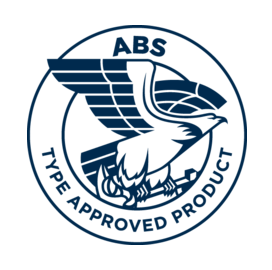REACH Regulation for Registration, Evaluation, Authorisation and Restriction of Chemicals.
Optical Cable Corporation (OCC) is located outside the geographic parameters of European Directive 2006/1907/EC (REACH) and its regulations. As a service to our customers and the communities within which they operate, OCC provides information regarding REACH compliance of its articles. OCC certifies that no substances in OCC manufactured Fiber Optic Cables (FOC) are intended to be released during normal and reasonably foreseeable conditions of use. OCC regularly monitors the list of substances of very-high concern (SVHC) and candidate SVHC published by the European Chemicals Agency (ECHA) and contacts suppliers of substances and preparations in articles and packaging for SVHC determination.
Based on available information from raw materials suppliers or quantitative analytical data, where applicable, Optical Cable Corporation certifies that to the best of our knowledge the FOC manufactured by OCC do not contain declarable amounts of the SVHCs currently listed (as of 14 June 2023) in the candidate list on the ECHA website for compliance to the REACH Directive, with the following exceptions:
FOC with outer jackets made from some thermoplastic polyurethanes, some polyolefins, and some low smoke PVCs contain, in amounts potentially greater than 0.1% (w/w), the substance 2-(2H-benzotriazol-2-yl)-4,6-ditertpentylphenol (UV-328) CAS# 25973-55-1, which was added to the REACH Candidate List of SVHCs on 17 Dec 2014.
FOC with outer jackets made from some thermoplastic polyurethanes, and some polyolefins, contain, in amounts potentially greater than 0.1% (w/w), the substance Dodecachloropentacyclo[12.2.1.16,9.02,13.05,10]octadeca-7,15-diene (or Dodecachlorodimethanodibenzocyclooctane, CAS# 13560-89-9), which was added to the REACH Candidate List of SVHCs on 15 Jan 2018.
FOC with outer jackets or buffers made from some low smoke and low temperature PVCs contain, in amounts potentially greater than 0.1% (w/w), the substance bis(2-ethylhexyl) tetrabromophthalate – CAS# 26040-51-7, which was added to the REACH Candidate List of SVHCs on 17 Jan 2023.
FOC with outer jackets made from some thermoplastic polyurethanes contain, in amounts potentially greater than 0.1% (w/w), the substance Melamine – CAS# 108-78-1, which was added to the REACH Candidate List of SVHCs on 17 Jan 2023.
FOC with outer jackets made from some low smoke/zero halogen materials contain, in amounts potentially greater than 0.1% (w/w), the substance Barium diboron tetraoxide – CAS# 13701-59-2, which was added to the REACH Candidate List of SVHCs on 17 Jan 2023.
FOC with some E-glass strength members contain, in amounts potentially greater than 0.1% (w/w), the substance Diphenyl(2,4,6-trimethylbenzoyl)phosphine oxide – CAS# 75980-60-8, which was added to the REACH Candidate List of SVHCs on 14 June 2023.
As these substances are not intended to be released into the environment under normal or reasonably foreseeable conditions of use, there are no known safe handling instructions.
To determine the SVHC content of specific FOC please contact OCC directly at +1-800-622-7711 or info@occfiber.com.
RoHS2 Restriction of Hazardous Substances in Electrical and Electronic Equipment
Based on the same available information or quantitative analytical data, where applicable, Optical Cable Corporation also certifies that to the best of our knowledge OCC manufactured Fiber Optic Cables (FOC) do not contain declarable amounts of materials listed in Annex II of the European Commission Directive 2011/65/EU and known as the Restriction of the use of certain Hazardous Substances in electrical and electronic equipment (RoHS2 Directive). This includes the four phthalates (DEHP, BBP, DBP, and DIBP) that were added to the Annex II list in 2015 per Directive (EU) 2015/863 (commonly known as RoHS3).
The listed hazardous substances, in levels above the specified maximum concentrations, are not normally present in the product(s) listed above nor are they added intentionally in the construction of the product(s), and any possible contamination with any listed material is unintentional. Accordingly, the listed substances are judged not to be present in the composition so as to materially impact compliance with the RoHS2 Directive (recast).



